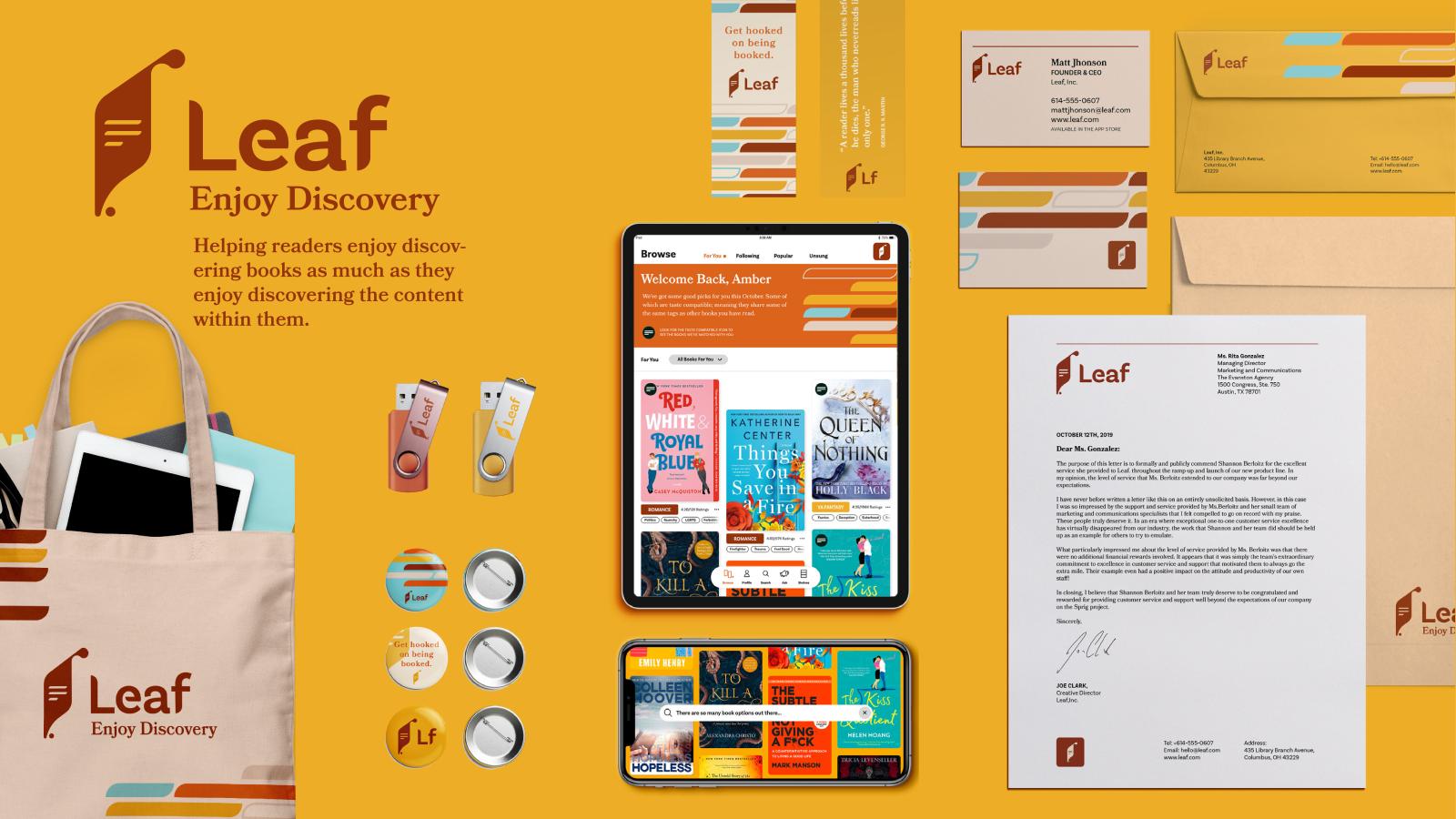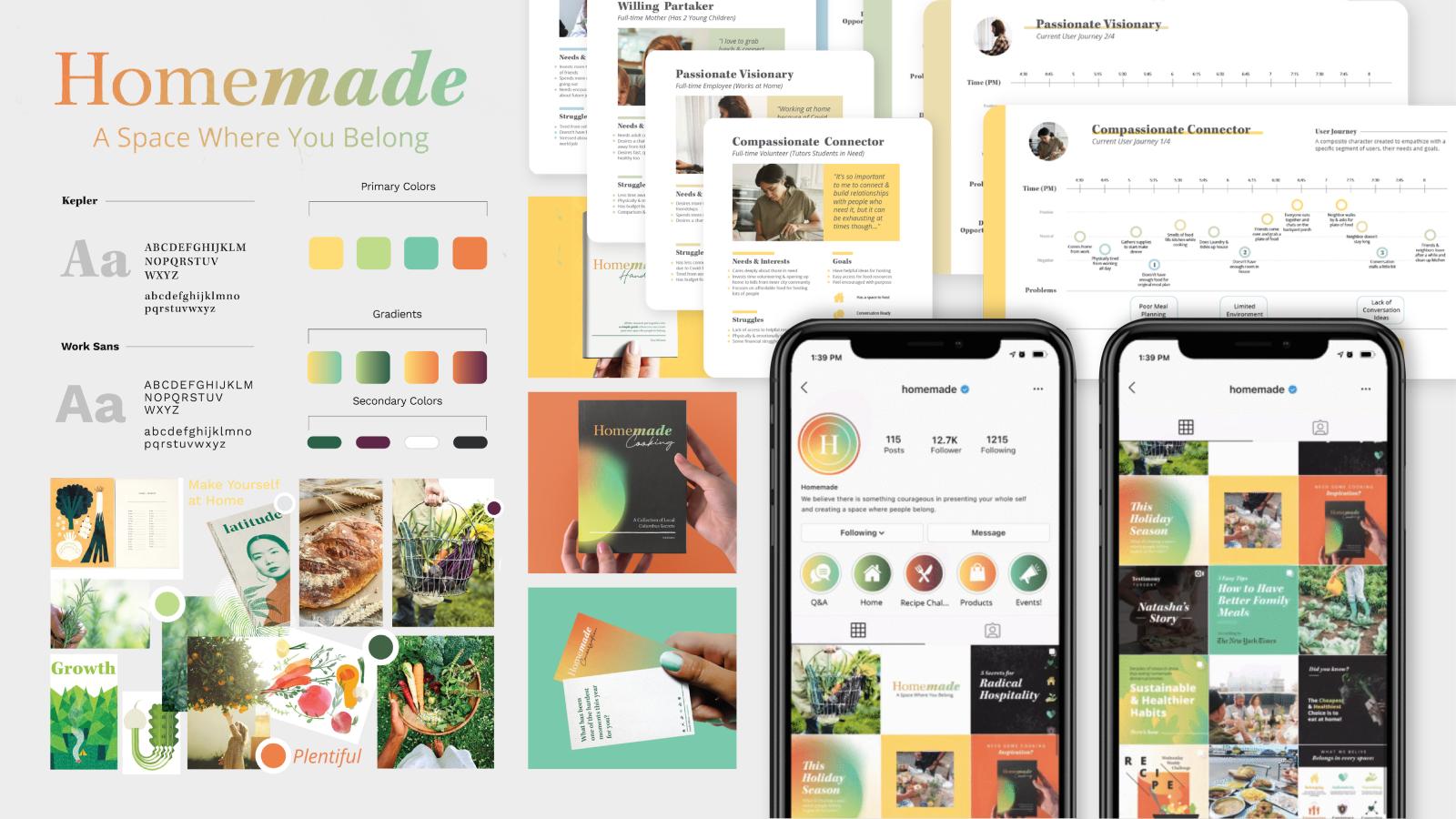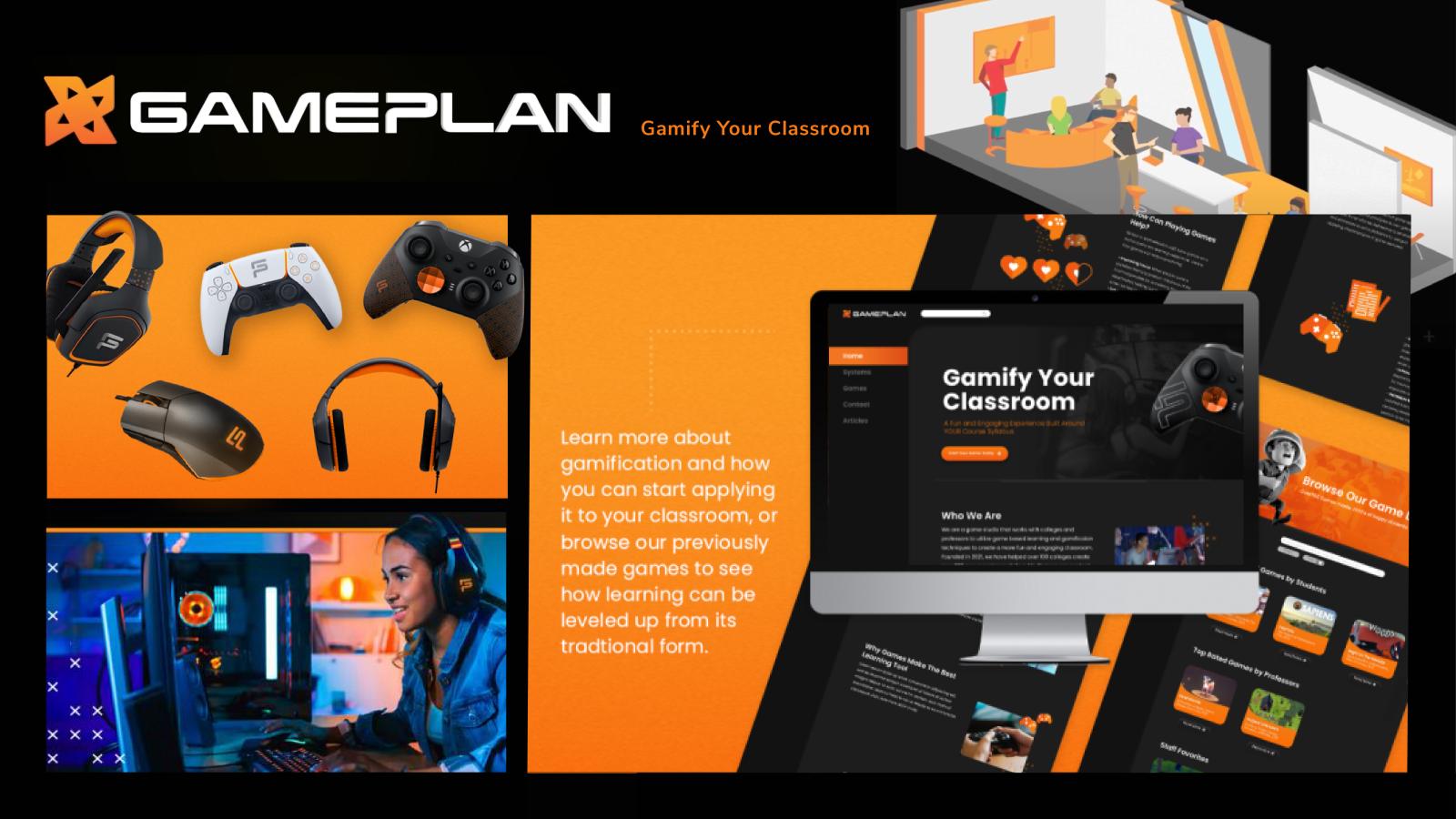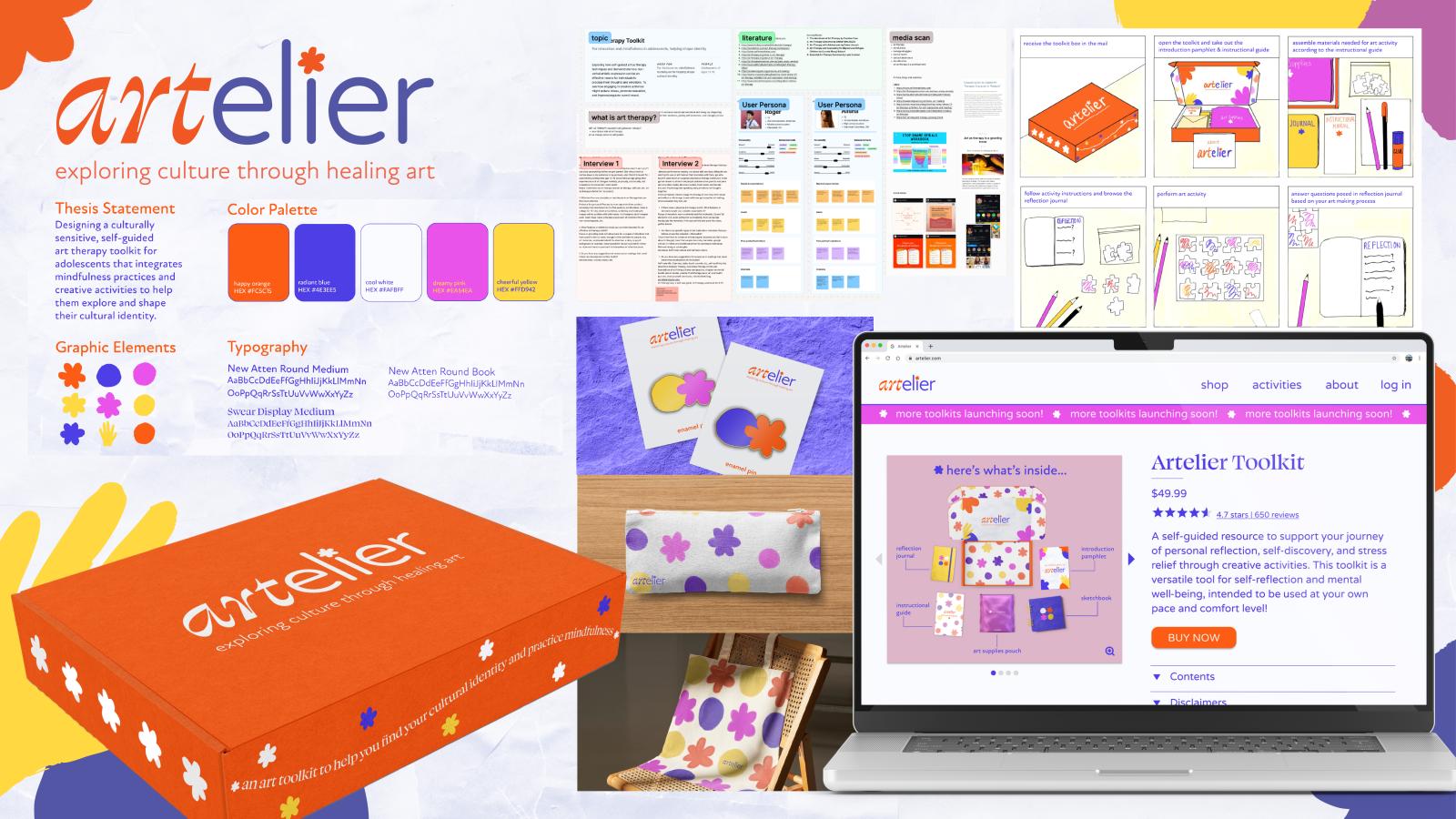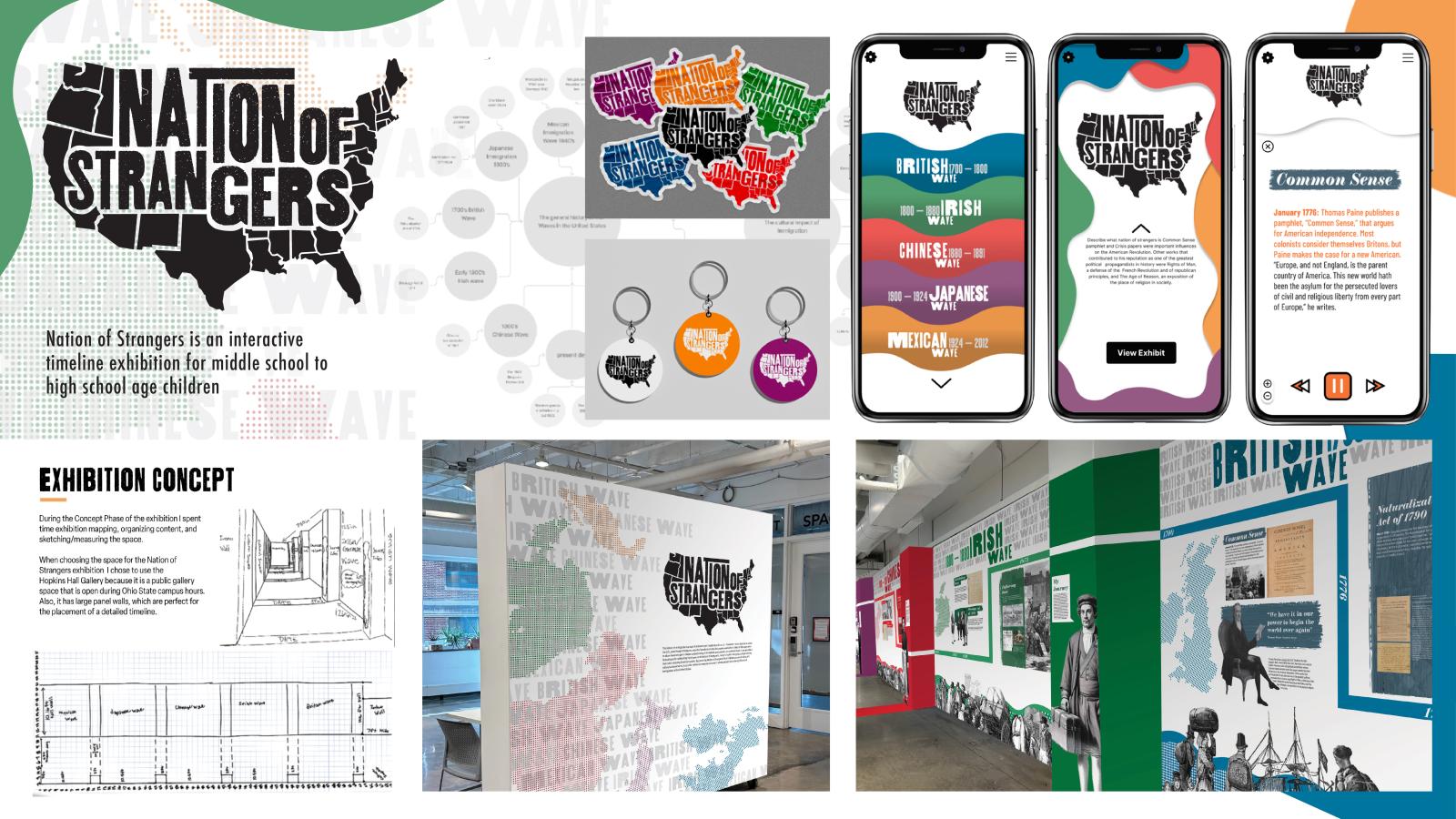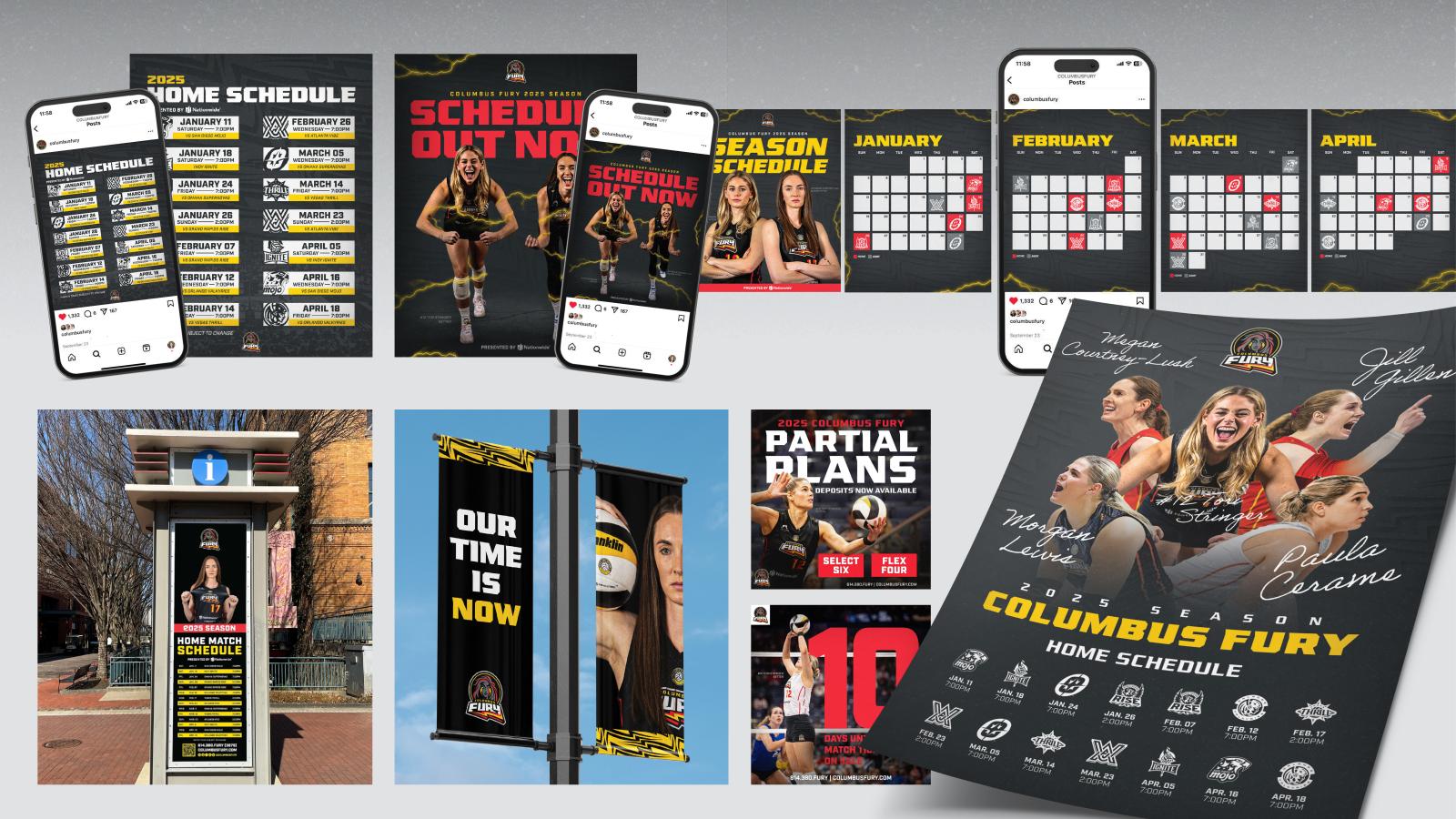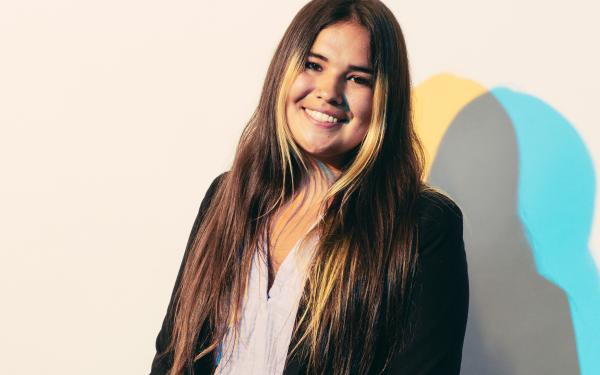Do you see design as more than just visuals—as a way to connect, inform, and inspire?
At Ohio State Design, our Visual Communication Design program is where your creativity meets purpose. Here, you’ll explore the full spectrum of this dynamic field—from branding and packaging to motion graphics, data visualization, and beyond.
You’ll learn to design with people in mind, using human-centered research to guide your creative decisions. Whether you're crafting a brand identity, designing a mobile app, or creating a wayfinding system for a public space, you’ll gain the tools and insight to make your work meaningful and impactful.
Our courses blend design theory with hands-on experience using advanced digital tools and media. You’ll develop polished, professional-level work that reflects your unique voice and meets the highest industry standards. And as you grow, you’ll tackle real-world challenges across four powerful themes: education and learning, health and wellness, history, culture and technology, and social impact.
Your journey culminates in a final project will show the world what you’re capable of—an independent design that brings together everything you’ve learned.
Are you ready to design the messages that move the world?
Join us at Ohio State’s Visual Communication Design program—and start shaping the future of how we see, share, and understand.
What is the Visual Communication Design Major?
The Visual Communication Design program at The Ohio State University equips students to create meaningful visual systems that inform, engage, and inspire. Through a human-centered approach, students explore diverse areas such as brand identity, wayfinding, packaging, publication, web/mobile interfaces, and data visualization. Courses integrate advanced computing and digital media tools, enabling students to produce refined, professional-level work. The curriculum emphasizes design research, storytelling, and social relevance, preparing students to tackle complex communication challenges across industries. Students develop solutions that address key themes—education, health, culture, and social impact—and present their final projects in a public spring exhibition. This program fosters creativity, technical skill, and strategic thinking, empowering graduates to become leaders in the evolving field of visual communication.
"Visual Communication Design helps shape how people understand, trust, and engage with the world—making communication more human in an age of automation and information overload."
Yvette Shen, Visual Communication Design Coordinator
Curriculum and Course Sequence
A Collaborative First-Year Experience
All Design students begin in the 18-credit hour collaborative Design Foundations program. This is a shared first-year experience where all design students build core creative, technical, and collaborative skills before applying to their chosen major.
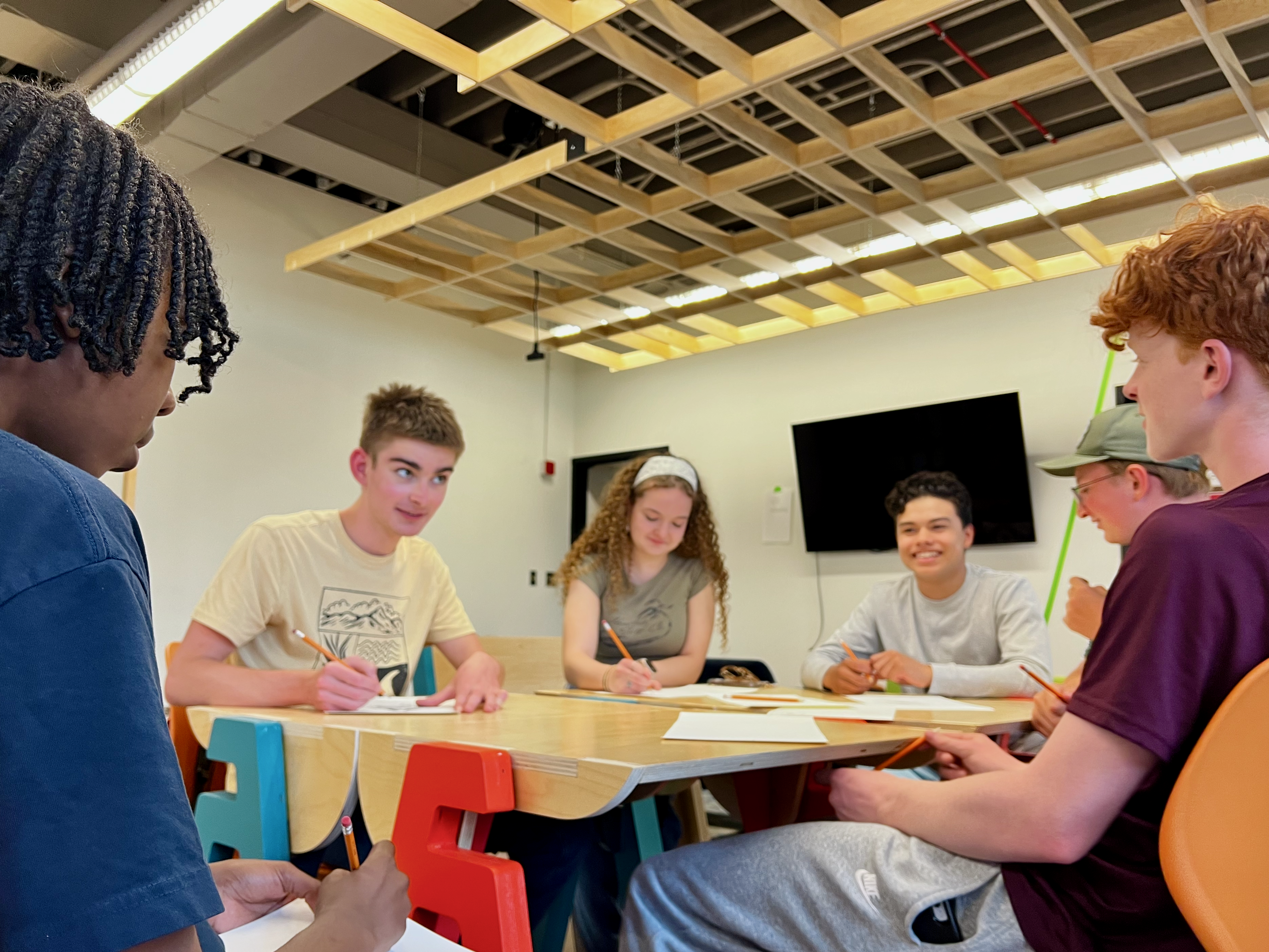
Second Year and Beyond...
Second Year
Autumn
- DESIGN 3103: Introduction to Visual Communication Design I
- DESIGN 3200: Design Research I
- DESIGN 3453: Design Media II for Visual Communication Design
- DESIGN 3503: Typographic Design
Spring
- DESIGN 3153: Introduction to Visual Communication Design II
- DESIGN 3403: Design Media I for Visual Communication Design
- DESIGN 3553: Materials, Process, and Production for Visual Comm Design
Third Year
Autumn
- DESIGN 4103: Intermediate Visual Communication Design I
- DESIGN 4200: Design Research II
- DESIGN 4403: Design Media III for Visual Communication Design
Spring
- DESIGN 4153: Intermediate Visual Communication Design II
- DESIGN 4650: Collaborative Design
- DESIGN 4750: Professional Practices
Fourth Year
Autumn
- DESIGN 5103: Advanced Visual Communication Design I
- DESIGN 5203: Design Research III for Visual Communication Design
- DESIGN 5803: Design Seminar for Visual Communication Design
Spring
- DESIGN 5453: Design Media IV for Visual Communication Design
- DESIGN 5650: Advanced Collaborative Design
History of Art Minor
Visual Communication Design students* are required to complete a minor in History of Art—a meaningful collaboration between Design and the Department of History of Art that deepens creative perspective and adds value to your degree.
The minor includes five courses (15 credit hours), with Design 2750 counting toward both the major and minor. Design 5750 is a recommended upper-level option. At least two courses must be at the 4000-level or above.
This required minor doesn’t limit your academic path—you’re free to pursue additional minors and customize your experience.
* The History of Art Minor is only required for students on the GE-N curriculum. Students who started at Ohio State prior to AU2022, and are therefore on the GE-L curriculum, have a similar number of HISTART courses in their GE-L requirements.
Gain Experiences & Discover Your Passion
Opportunities to become fully engaged in an experience are instrumental to discovering your passion. Internships will give you the experience you need to differentiate yourself from other candidates, support your career goals, contribute to your skill set and determine how your career exploration process and focus may need to be modified to support your long-term goals. Employers are looking for graduates that have already taken the next step to becoming professionals in their field.
Student Achievement Data
| Academic Year | Retention 1 | Avg. Time to Degree 2 | Job Placement 3 | Graduate School Acceptance 4 |
|---|---|---|---|---|
| 2024-2025 | 97% | 4.2 Years | NA | 100% |
| 2023-2024 | 100% | 4.2 Years | 14 of 15 = 93% | 100% |
| 2022-2023 | 97% | 4.0 Years | 10 of 15 = 77% | 100% |
- Percentage of students enrolled the previous academic year who returned the following year.
Source: University 15th Day Census - Average time at Ohio State for the graduating class to earn their degree in design.
Source: University Data Store - College of Arts and Sciences Reporting - Percentage of students who graduated and were employed in a full-time design job within a year of graduation.
Source: LinkedIn Audit* Not all alumni maintain LinkedIn Profiles - Percentage of students who applied to a graduate program that were accepted.
Source: LinkedIn Audit* Not all alumni maintain LinkedIn Profiles
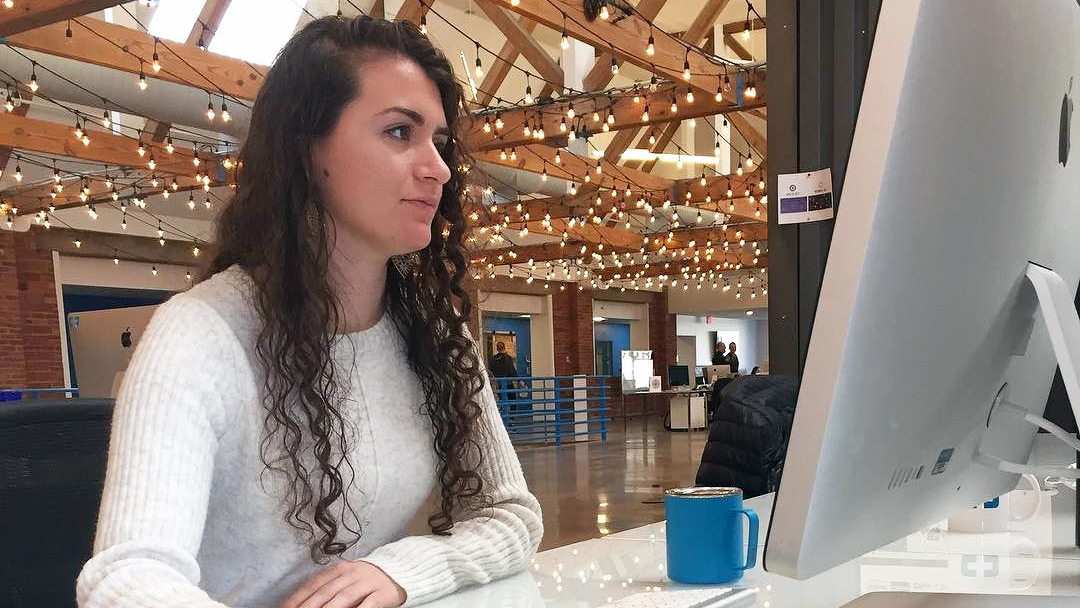
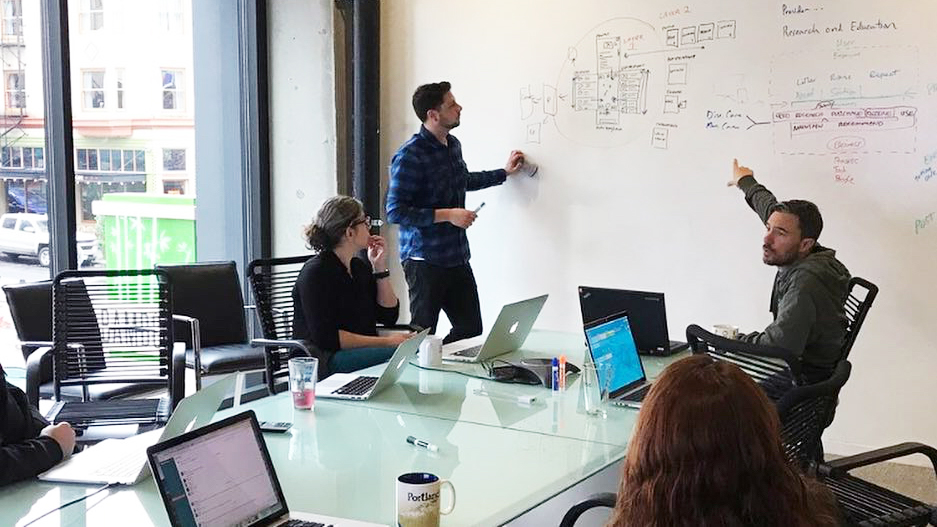
Notable Companies Hiring our Visual Communication Designers
Here are some notable companies who have recently hired our visual communication design graduates to create meaningful visual systems that inform, engage, and inspire — throughout their organizations.
- Chase is a leading financial services company where visual communication designers help create intuitive digital banking experiences, from mobile app interfaces to customer-facing dashboards, making finance more approachable and trustworthy.
- Cardinal Health is a major healthcare services company that relies on designers to communicate complex medical information clearly, develop user-centered digital tools, and design branded materials that reach diverse audiences in health and wellness.
- IBM iX is the design and consulting arm of IBM. It brings together strategists, technologists, and visual designers to craft digital products and services, blending branding, UX, and innovation at a global scale.
- Oology is a Columbus-based branding and marketing firm where designers craft visual identities, campaigns, and storytelling strategies that bring brands to life across print, digital, and environmental touch-points.
- Zoco is a Columbus-based product and UX design studio now focused squarely on healthcare. They work with health-tech teams to uncover human and system insight doing deep user research, human-factors work, and crafting patient/provider-centric digital experiences that balance complexity, compliance, and empathy.
- Roto is an international design and production company specializing in museum and exhibition experiences. Visual communication designers play key roles in shaping environmental graphics, digital interactives, and interpretive storytelling.
- Landor (Fitch) is a world-renowned branding consultancy. Here, designers work on developing global brand identities, packaging systems, and experiences that influence how millions of people interact with brands daily.
- Lextant is a human-centered design research firm. Designers collaborate closely with researchers to translate insights into clear visual frameworks, prototypes, and communication strategies that inform product and service innovation.
Professional Organizations
Professional organizations play an important role in the development of design disciplines and provide valuable resources to their student and professional members. The following organizations are all relevant to Visual Communication Design.
- American Institute of Graphic Arts (AIGA)
- Columbus Society of Communicating Arts (CSCA)
- Interaction Design Association (IxDA)
- Society for Environmental Graphic Design (SEGD)
- Usability Professionals Association (UPA)
Looking to hire a Design student?
Employers seeking to hire for internships and/or full-time opportunities are encouraged to work with the Center for Career and Professional Success to post openings via Handshake.

